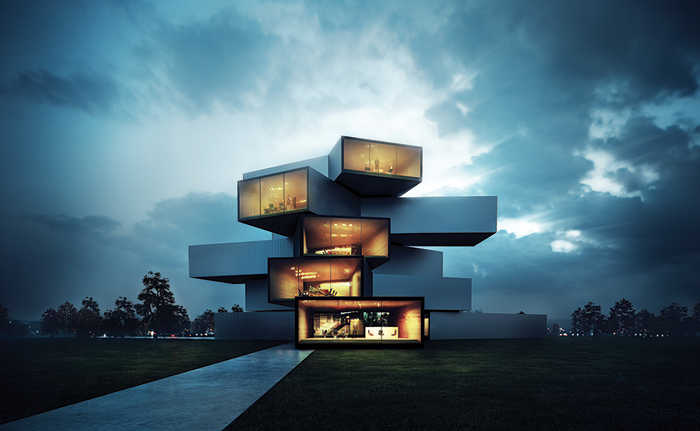Future of Architectural Visualization
What is interesting is that architectural visualization is experiencing a revolution fueled by the developments in AI and real-time rendering. Gradually, these tools are becoming integral to architectural and design work in the course of industry transformation. It is now time to explore how these innovations are impacting architecture & design practice.
Real-Time Rendering: A Game Changer in Design Workflow
Real-time rendering is precisely one of those tools that have become basic in today’s frenzied architectural world. In particular, through the use of real-time interactive visualization, architects are able to modify design options and material finishes on the fly. Based on the informal discussions with experts in the field, it is also important to note that real-time rendering is not just an additional tool that can be used in the design process but rather a crucial element. The majority of practitioners use actual-time rendering frequently, which underlines the significance of the function in the finalization of design choices and tight cooperation.
Unlike the conventional design processes that require a fixed design before adjustments can be made, this technology allows changes to be made in real time. Finally, real-time rendering enables architectural visualization to be more engaging and timely for client meetings or internal design meetings.
In-House Visualization: A Growing Trend
Another notable trend is the increasing preference for in-house visualization. Many firms, regardless of size, are opting to produce their own visualizations rather than outsourcing. This shift reflects a broader move towards greater autonomy and control over the design process. By developing visualization skills within their teams, firms can ensure more precise and tailored outcomes, fostering a deeper understanding of project details and design intent.
The rise of in-house visualization emphasizes the significance of fundamental abilities in architectural visualization. As more organizations bring these capabilities in-house, there is a greater emphasis on providing architects and designers with the skills they need to use these technologies effectively.
AI: The Next Frontier in Architectural Innovation
The breath of artificial intelligence (AI) storms the circles of architecture, delivering more than just the tools that are available. Based on recent data, up to 55% of architect and designer populations fully accept the use of AI or, rather, are trying to take advantage of its potential capabilities. This trend has resulted from the fact that AI has been proven to improve productivity, streamline processes, and provide additional avenues for design.
The ambit of AI in architecture ranges from supporting normal design activities to automating the whole design process. Its ability to enhance quality, cut costs, and shorten delivery timelines helps to sound its effectiveness. In any case, as the human race moves forward, the possibility of integration of AI tools whenever necessary is bound to give design and problem-solving a different twist altogether.
The Future is Bright: Embracing Technological Advancements
The incorporation of AI and real-time rendering in architecture today is not a fad but an indication of the developments in this field. Such technologies are changing the way architects interpret, create, and implement their designs. With the increasing integration of such tools into everyday activities, they present tantalizing possibilities for improving the efficiency and creativity of the design process.
For those looking to stay ahead in this dynamic field, adopting these technologies is key. Arktek 3D Studio is at the forefront of this transition, providing cutting-edge technologies that enable architects and designers to fully realize the potential of real-time rendering and AI. Discover how our knowledge can boost your architectural projects and keep you at the forefront of design technology.
Embrace the future of architectural visualization with Arktek 3D Studio. Contact us today to learn more about how our innovative solutions can transform your design process.

